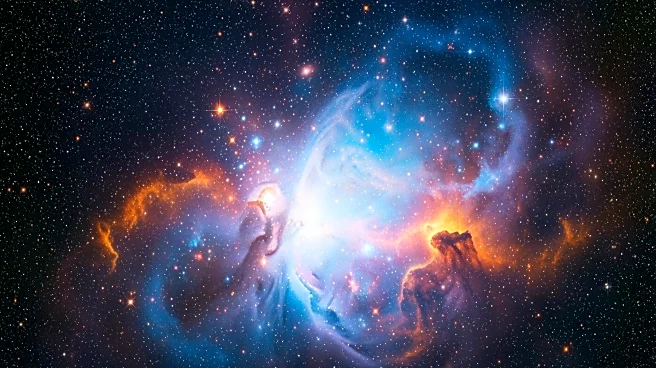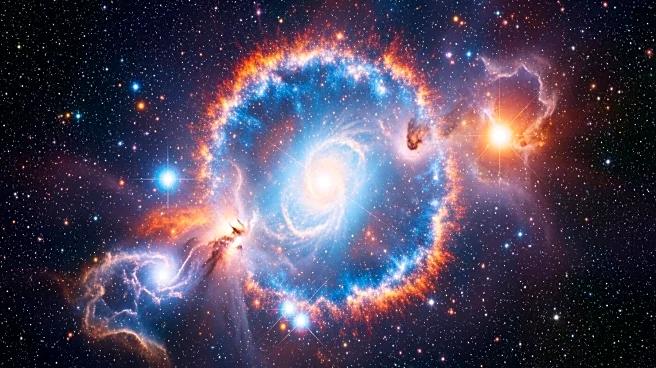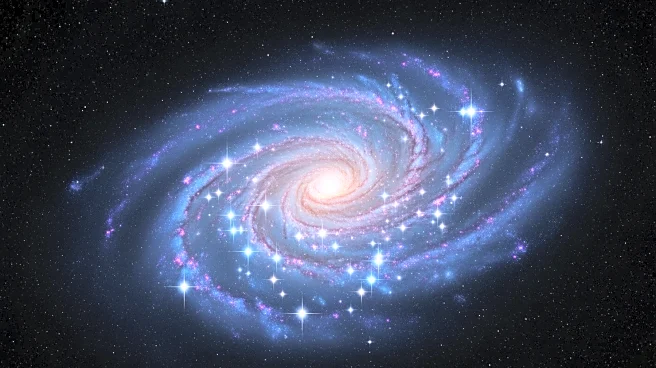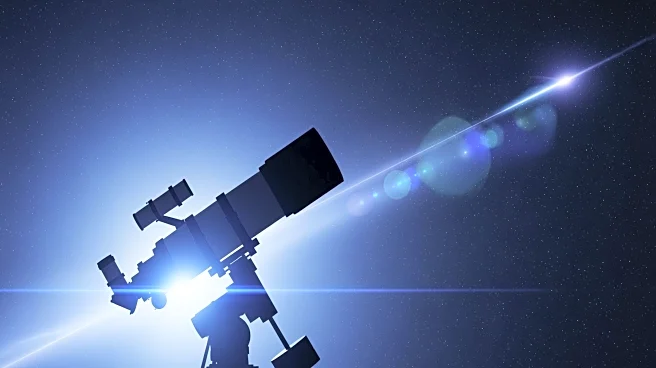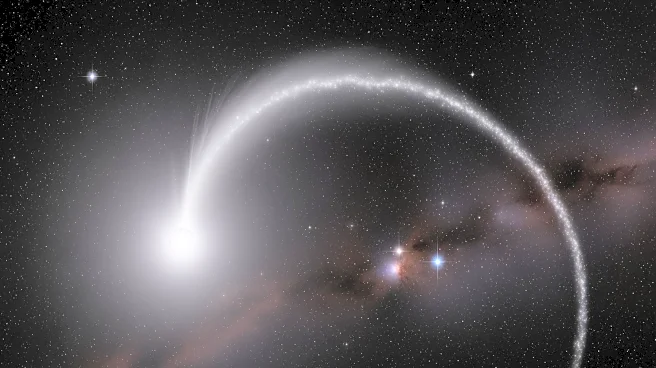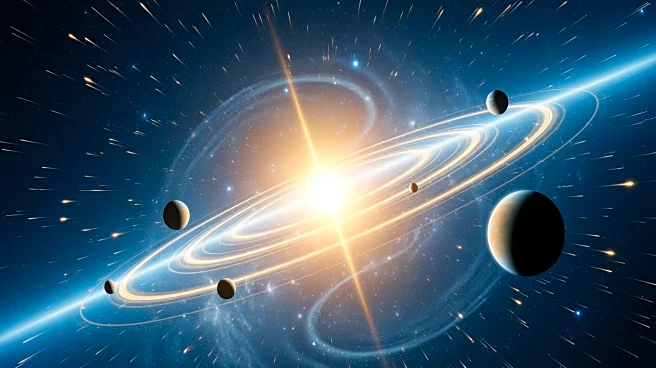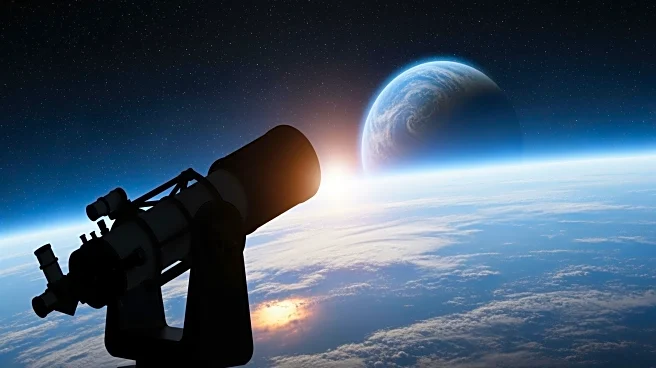What's Happening?
Dutch astrophotographer Cornelis van Zuilen has successfully captured an image of the Eastern Veil Nebula, a supernova remnant located 2,100 light-years from Earth in the constellation Cygnus. The nebula,
part of the larger Cygnus Loop, spans 120 light-years and was formed from a supernova explosion of a star 20 times more massive than the sun, occurring 5,000 to 8,000 years ago. Van Zuilen's image, created using 35 hours of telescopic data, reveals intricate details of interstellar dust and gas. Despite challenging weather conditions in the Netherlands, van Zuilen utilized an Askar 103APO refractor telescope and a ZWO camera to capture the nebula's light, highlighting the faint hydrogen alpha filaments through careful processing.
Why It's Important?
This achievement underscores the capabilities of amateur astrophotographers in contributing to the understanding of cosmic phenomena. The detailed imagery of the Eastern Veil Nebula provides valuable insights into the structure and composition of supernova remnants, aiding scientific research. Such contributions are crucial for advancing knowledge in astrophysics, particularly in understanding the lifecycle of stars and the formation of nebulae. The use of advanced equipment and techniques by amateur astronomers like van Zuilen demonstrates the accessibility of astrophotography, encouraging public interest and participation in space exploration.
